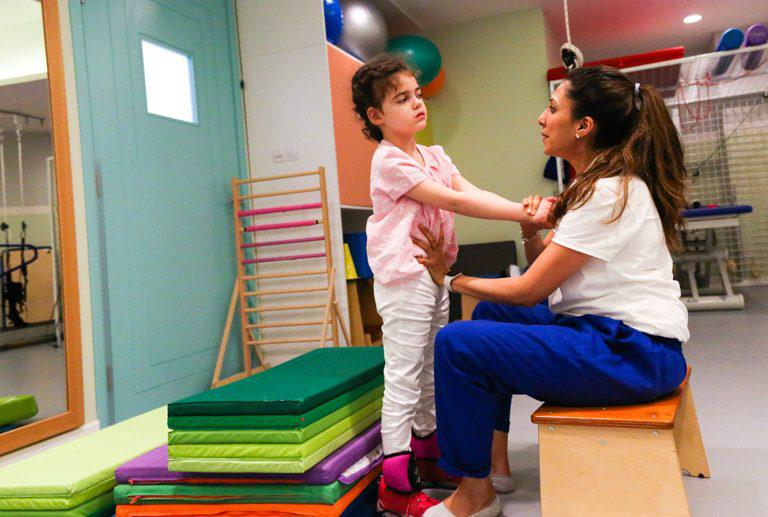
Pediatric physiotherapy is a specialized branch of physiotherapy that helps children with movement disorders and developmental delays. It focuses on improving their posture, balance, coordination, strength, and mobility through various therapeutic techniques.
Here’s how pediatric physiotherapy supports better stability and posture in children.
Strengthening core muscles:
A strong core helps children maintain proper posture and balance. Weak abdominal and back muscles can lead to slouching or difficulty standing upright. Physiotherapists introduce fun and engaging exercises, such as sitting on therapy balls, crawling, and simple yoga poses, to build core strength. Strong core muscles provide better support for the spine, reducing poor posture habits.
Improving muscle coordination:
Children who struggle with balance may have difficulty coordinating their muscles properly. Physiotherapy sessions include activities that improve coordination, such as stepping exercises, walking on a straight line, or playing games that require controlled movements. These activities train the muscles to work together efficiently, making movement smoother and more stable.
Improving postural awareness:
Many children are unaware of their posture, leading to slouching or leaning to one side. Physiotherapists use visual and physical cues to help children recognise and correct their posture. Simple activities like standing against a wall, practising sitting correctly, or using posture-correcting tools encourage better body alignment.
Balance training exercises:
Balance is key for daily activities like walking, running, and playing sports. Pediatric physiotherapy includes balance training exercises to improve stability. Activities such as standing on one leg, walking on uneven surfaces, and using balance boards help children develop better control over their movements. Improved balance reduces the risk of falls and supports overall coordination.
Correcting gait patterns:
Some children develop improper walking patterns, such as walking on their toes or dragging their feet. These habits can affect posture and balance over time. Physiotherapists assess a child’s walking style and introduce exercises to encourage proper foot placement, heel-to-toe walking, and symmetrical movement. This improves both posture and balance while walking.
Encouraging proper sitting and standing habits:
Posture issues often begin with poor sitting and standing habits. Physiotherapists teach children the correct way to sit at a desk, stand upright, and move efficiently. By reinforcing these habits at home and school, children develop a natural awareness of maintaining good posture.




